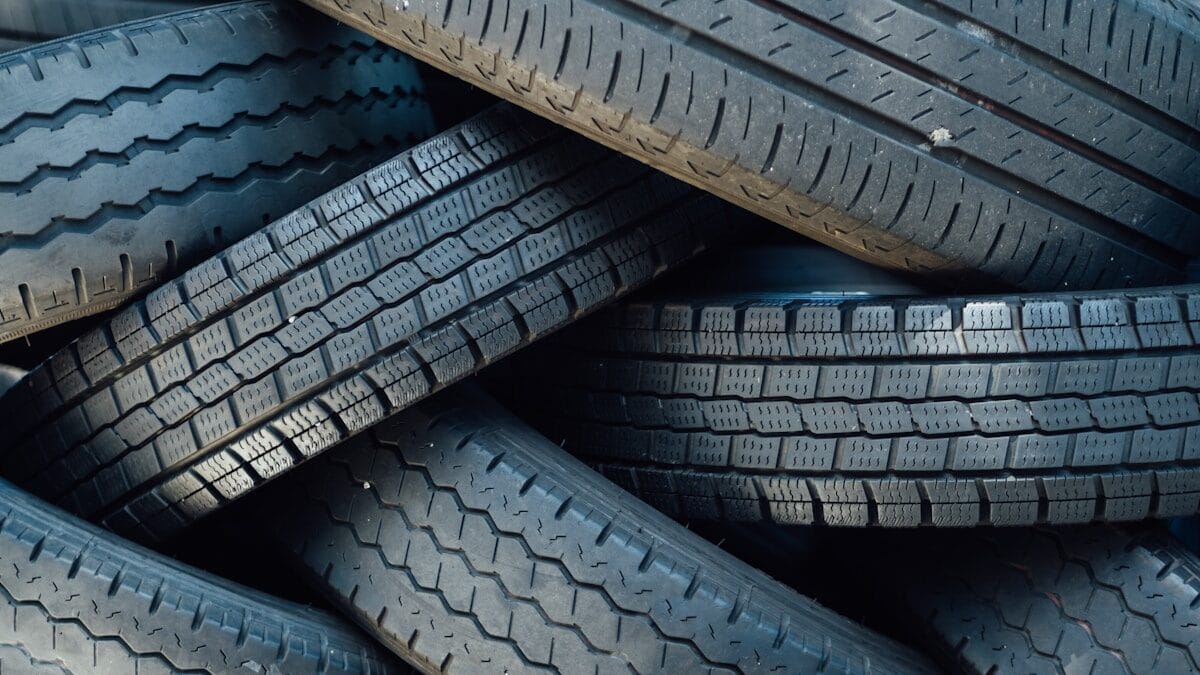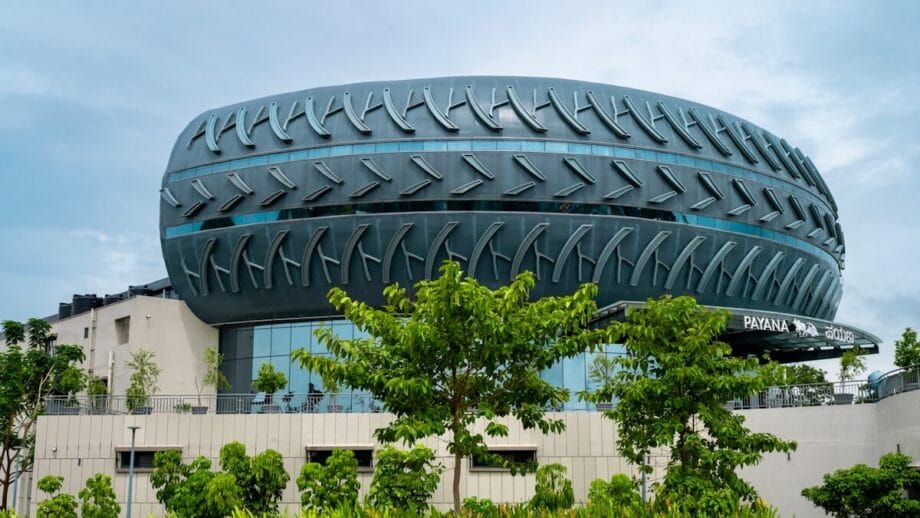The rubber industry is an integral part of the worldwide manufacturing sector, the reason being that it provides the necessary materials for numerous products that range from industrial machinery to car parts. Rubber sector innovation has always been closely linked to advancements in technology.
The introduction and use of cutting-edge solutions in the industrial rubber market is basically re-engineering manufacturing processes, enabling companies to draw profits synergistically, such as higher productivity, cost-saving, achieving high product quality, and even meeting stricter environmental standards.
Introduction to Emerging Rubber Technologies

Rubber has been a fundamental material for the manufacture of various products for a long time, and it was the material that provided the products with the features of durability, flexibility, and resistance to their lifespan. Although the conventional ways of producing rubber still generate a large amount of waste, consume a lot of energy, and have limited flexibility with regard to design.
The development of cleaner methods, better materials, and greater production efficiency is making the above-mentioned problems more accessible to solve. Experimenting with the compounding, processing, and recycling of rubber is constantly developing new applications for the sectors of electronics and the automobile industry.
It is also becoming more necessary to have advanced technology to provide the required performance for such materials.
Smart Rubber: The Role of Sensors and Embedded Technology
The implementation of smart technology in rubber products is a fascinating trend in the rubber industry. The term “smart rubber” denotes rubber materials that have sensors or other electronic gadgets implanted in them so that they can interact with their environment and provide real-time data.
The ability of these sensors to register a wide range of variables, such as temperature, pressure, strain, and moisture levels, is instrumental in the foci of predictive maintenance, quality control, and performance monitoring.
Applications of Smart Rubber
- Automotive Industry: In order to monitor tire pressure, temperature, and wear, smart rubber is being utilized in tires and seals. The positive changes mentioned are at the root of improved car safety and fuel savings. Such technological progressions tighten the vehicles’ effectiveness, lengthen the tires’ durability, and lessen the chances of tire failures.
- Aerospace and Aviation: Aerospace industry production has undergone a radical change through the usage of smart sensor-embedded rubber gaskets and seals that make it possible to control the temperature and pressure variations, thereby achieving the safety and reliability of the aviation systems.
- Industrial Equipment: Smart rubber components installed in machines such as industrial conveyor belts and seals have given the possibility to the identification of the wear and tear process in real-time, hence profoundly lowering the maintenance costs and the incidence of malfunction.
Advances in Rubber Compounding and Material Science
Rubber compounding, or the composition of rubber, is the main factor that determines the performance of rubber. In material science, there have been several breakthroughs. The scientific breakthroughs have opened the door for the development of new rubber compounds that have more strength, longer service life, and the capacity to resist environmental variations.
Key Innovations in Rubber Compounding
- Nanocomposites: For rubber compounds, the addition of such materials on the nanoscale, like graphene or carbon nanotubes, has dramatically raised the parameters of strength, conductivity, and elastic characteristics. Composite nanomaterials reinforced with improved mechanical properties may be considered as first-choice materials for implementation, which are highly demanded in various fields of performance, such as electronics, aerospace, and the automotive industry.
- Thermoplastic Elastomers: Thermoplastic Elastomers (TPEs) refer to a class of materials that possess the beneficial properties of both thermoplastics and elastomers and maintain a distinctive and stable synergy between the ease of processing and mechanical properties. As a result of their effectiveness and reusability, such materials are going into the markets of three major sectors, such as consumer goods, automotive, and medical devices.
- Bio-Based Rubber: The rise in the bio-based rubber sector is primarily attributable to the mounting need for green and sustainable practices. Such materials are readily obtainable from regenerative sources such as algae and edible oils. In addition to having reduced environmental footprints, bio-based rubber can also be used to substitute the conventional synthetic one in the industries of shoe making and automobile parts.

Additive Manufacturing: 3D Printing with Rubber
Three-Dimensional (3D) printing, known as additive manufacturing, has dramatically developed to be one of the most significant changes in the rubber sector. This innovation has allowed producers to make detailed rubber parts with such tiny features that almost no traditional molding processes can be used.
3D Printing Benefits in the Rubber Industry
- Design Flexibility: 3D printing main benefit is the possibility to create highly customized rubber parts. Consequently, the manufacturers can not only delve into different designs but also cut down on the material consumption and create prototypes in less time.
- Rapid Prototyping: 3D printing is the primary reason for the accelerated production of rubber parts; therefore, enterprises are enabled to validate their concepts faster, as well as they can conduct more iterations in less time in comparison with traditional methods. Besides that, it has the double effect of minimizing the time-to-market and making product development cycles more efficient.
- Complex Geometries: The 3D printing technology has achieved the goal of detailed internal structures and the connecting sections of rubber components that were indescribably difficult due to the limitations of the conventional molding methods.
Rubber Recycling and Sustainability Innovations
The rubber industry is under increasing pressure to adopt eco-friendly measures as the global concern about the environment is rising. The advent of technology for the recycling of rubber is that the recovery and utilization of rubber goods that used to be considered waste are becoming feasible.
Key Innovations in Rubber Recycling
- Devulcanization: Sulfur bonds in the rubber that give it strong and long-lasting features but make it difficult to decay are partly the reason why recycling of the rubber is so tough. However, through the devulcanization process, these bonds are broken, thus making rubber recycling more efficient. As a result of modern processes of devulcanization, recycled rubber of high quality can be utilized from old tires and various rubber products.
- Cryogenic Grinding: Rubber materials are first cryogenically ground after they are cooled down with liquid nitrogen. Besides being able to use the recycled rubber of elevated quality in the production of new goods such as construction materials and car parts, the procedure is also a kind of maintenance of the rubber properties.
- Upcycling: Upcycling technology focuses on transforming thrown-away rubber into products that are beneficial to the community, such as roads made of rubberized asphalt or rubber flooring for homes. It prolongs the life of the rubber that would otherwise be garbage dumps and reduces the requirement for raw materials.
Sustainability in Rubber Manufacturing
The technological advancements in the rubber industry have contributed a huge step forward in energy efficiency. Those novelties are notably slashing the carbon footprint by utilizing energy-saving equipment and better vulcanization methods.
Moreover, the industry is seeing less water usage because of the introduction of dry curing and solvent-free processes for the manufacture of rubber. These processes are enabling a clean and recyclable production by their substantial contributions to water and ecological impacts of rubber manufacturing.
Automation and Robotics in Rubber Manufacturing
In the manufacturing sector, automation and robots are changing many areas, and the rubber business is no exception. Rubber processing efficiency, accuracy, and quality are all being improved by the use of sophisticated robotic equipment.
Applications of Robotics in Rubber Manufacturing
- Automated Mixing and Compounding: The processes of rubber mixing and compounding have been automated by robotic technologies, which not only give more precise recipes but also reduce the chance of human mistakes. Consequently, the output becomes more consistent and of higher quality.
- Inspection and Quality Control: Machines equipped with sensors and cameras can make on-the-spot checks of rubber products down to minute details so as to differentiate between the material’s evenness and other minor aspects. Early-stage detection of production defects is thus feasible by this means, which elevates the quality of products and lowers the amount of waste.
- Automated Assembly Lines: The utilization of automated assembly lines is leading to the simplification of production procedures, thus the large-scale rubber manufacturing industry is benefiting a lot. Robots can perform various operations such as cutting, molding, and packing, which are repetitive, thereby increasing the output and reducing labor costs.
Industrial Rubber Market

The industrial rubber market is essential in diverse sectors ranging from electronics, manufacturing, automotive, to construction. Durability, flexibility, and resistance to heat, chemicals, and wear are among the features that make industrial rubber precious.
The automobile tire industry is the largest user of rubber, accounting for more than half of the total rubber consumption, as per the Department of Scientific and Industrial Research reports. Bicycle tires and tubes come in second at 15%, followed by shoes at 12%, belts and hoses at 6%, and latex and rubber goods at 7%. Together, the other rubber goods account for almost 10% of total consumption.
According to Pristine Market Insights, a surge of technical developments in the rubber sector is changing production procedures in a number of different industries. As a result of the progress in material science, recycling methods, and the creation of smart rubber with sensors incorporated into it, manufacturers can now create products that are not only more efficient but also sustainable and of higher quality.
Although the changes in rubber compounding and the adoption of eco-friendly methods have solved the performance and environmental issues, the implementation of 3D printing, robots, and automation is increasing the production volumes even more. Such technologies will lead to the deepening of the industry’s transformation, thereby attracting further development of various fields such as consumer goods, automotive, aerospace, and healthcare.






